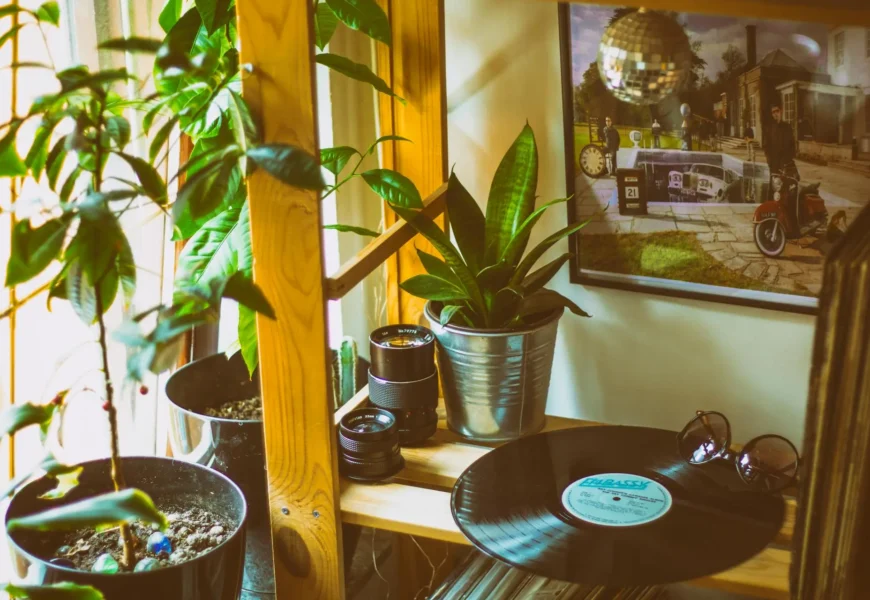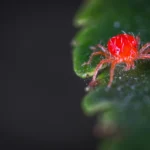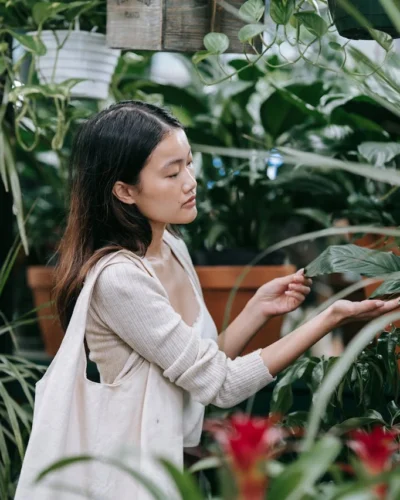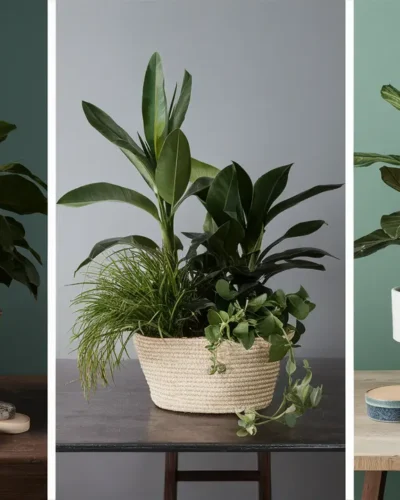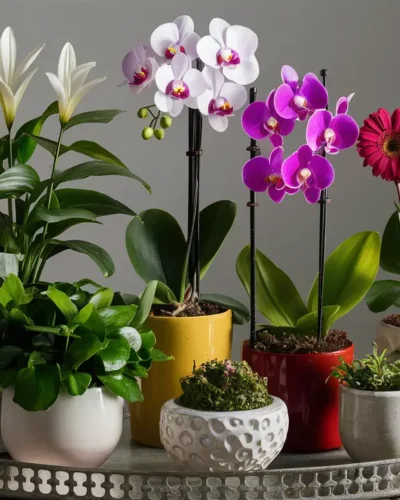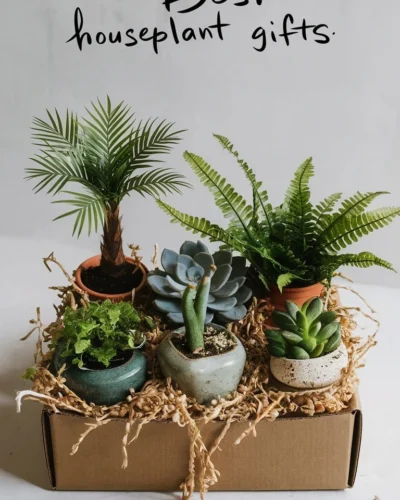Have you ever walked by your beloved houseplant only to find your fingers covered in a sticky, gooey substance? It’s not a scene out of a horror movie, but it can be a bit disconcerting! This sticky residue which is why Your Houseplants Are Getting Gooey, often called “sap” or “honeydew,” can be a sign that your plant is facing a problem.
In this blog post, we’ll dive into the sticky world of houseplant woes, exploring the common culprits behind this gooey mess. We’ll investigate the causes, identify the culprits, and provide you with effective solutions to restore your plant to its former glory.
Table of Contents:
The Culprit: Sap and Honeydew
The sticky substance on your houseplant can be attributed to two main sources: sap or honeydew.
Sap is a natural, sticky fluid produced by plants, often as a defense mechanism. It can ooze out of wounds or cuts on the plant, leaving behind a viscous residue. While sap is generally not a cause for concern, it can be a sign that your plant has been injured.
Honeydew, on the other hand, is a sticky, sugary substance excreted by certain types of insects, specifically aphids, mealybugs, and scale insects. These pesky critters feed on plant sap, and as a byproduct of their feeding process, they excrete this sweet, sticky substance.
Honeydew can be more concerning than sap, as it often indicates a pest infestation. This sticky residue can also attract other pests like ants and mold, making it even more crucial to address the issue.
Now, let’s delve into the specific situations that can lead to this sticky situation!
Sticky Situation 1: Pests
Ah, the sticky situation. You know the one—that gooey residue coating your beloved houseplants’ leaves. While it might look like spilled syrup or a mishap with your afternoon tea, it’s actually a sign your plant is under attack.
The most common culprit? Pests! Think of them as tiny, plant-loving vampires, sipping on your plant’s sweet sap. These sap-sucking villains leave behind a sticky mess called honeydew. It’s a sugary waste product, like a sticky note saying, “I was here!”
Honeydew can attract even more pests, like sooty mold, which looks like black, powdery dust. This sticky situation creates a double whammy for your plants, impacting their health and making them look less than stellar.
Common Pests To Watch Out For:
- Aphids: These small, pear-shaped insects love to feast on tender new growth. They come in a variety of colors, from green to black.
- Mealybugs: These fuzzy white insects, resembling tiny cotton balls, can quickly form colonies on your plant’s stems and leaves.
- Scale: These tiny, armored insects are often mistaken for bumps on the plant. They feed on plant sap, leaving behind a sticky residue.
How To Spot Pests:
- Inspect your plants regularly: Look closely at the undersides of leaves, stems, and buds.
- Check for signs of damage: Look for yellowing, wilting, or distorted growth.
- Look for the culprit: Examine your plants for tiny insects or their eggs.
What to Do When You Find Pests:
- Isolate your affected plant: This prevents them from spreading to other plants.
- Give your plant a good shower: Use a strong stream of water to wash away any visible pests.
- Use a natural insecticide: Try diluted insecticidal soap or neem oil for a gentle but effective treatment.
- Consider a more aggressive approach: If the infestation is severe, you might need to use a stronger insecticide.
Remember: Early detection and swift action are key to winning the battle against pests. Regularly inspecting your plants can help catch these sticky situations before they get out of control.
Have you ever dealt with a sticky situation on your houseplants? Share your experience in the comments below!
Here are some other articles that might be helpful:
Sticky Situation 2: Overwatering
Overwatering is a common culprit behind sticky leaves, especially for those new to the world of house plants. It’s easy to get caught up in the excitement of nurturing our little green friends, but too much water can lead to a sticky mess.
When you overwater your house plants, the soil stays damp for extended periods, creating an ideal environment for bacteria and fungi to thrive. These microorganisms can break down plant matter, releasing sugary substances that attract insects and leave a sticky residue on your leaves.
Signs of Overwatering:
- Yellowing leaves: Overwatering often leads to yellowing leaves, especially at the lower part of the plant. This happens because the roots are deprived of oxygen in waterlogged soil.
- Drooping leaves: Overwatering can make leaves droop as the excess water inhibits nutrient absorption.
- Foul odor: If the soil smells sour or moldy, it’s a sure sign of overwatering.
What to do:
- Check the soil: Before watering, always test the soil with your finger. If the top inch feels dry, it’s time to water. If it’s still moist, hold off.
- Repot if necessary: If you suspect overwatering is a recurring issue, you might need to repot your plant with fresh soil. This allows for better drainage. How to Repot a Houseplant
- Let the soil dry out: If you’ve overwatered, allow the soil to dry out completely before watering again.
- Improve drainage: Make sure your pots have drainage holes to prevent water from accumulating at the bottom.
- Choose the right plants: Some plants are more tolerant of overwatering than others. Pet-Friendly Plant Picks: Safe, Easy Houseplants for Homes with Pets
Remember, prevention is key. By being mindful of your watering habits and selecting plants that thrive in your home’s environment, you can minimize the chances of sticky situations.
Sticky Situation 3: Plant Stress
So, you’ve ruled out pests and overwatering, but your houseplants are still sporting a gooey, sticky coating. The culprit might be plant stress, a silent saboteur lurking in your indoor jungle.
Here’s the breakdown: Plants, like us, experience stress when their environment isn’t ideal. This could be due to:
- Sudden temperature changes: Shifting your houseplants from a warm indoor spot to a chilly windowsill or vice versa can trigger stress.
- Drafts: Even a subtle breeze from an open window can cause stress, especially for delicate plants.
- Insufficient sunlight: Houseplants thrive on light, so if yours are struggling to get enough, they might start producing sticky sap as a coping mechanism.
- Overfeeding: Just as too much water can be harmful, so too can excessive fertilization. Too much fertilizer can burn the roots, leading to stress and sticky sap production.
- Repotting shock: While repotting is generally a good thing, it can sometimes be stressful for your plants. They may need time to adjust to their new environment.
How to Help:
- Create a stable environment: Choose a spot for your plant that’s consistent in temperature and free from drafts.
- Provide adequate sunlight: If your houseplant is struggling, consider moving it closer to a window or investing in a grow lamp.
- Check for over-fertilization: If you suspect over-fertilizing is the issue, flush the soil with plenty of water to remove excess fertilizer.
- Be patient: Give your plants time to adjust after repotting, and don’t be alarmed if they exhibit a few signs of stress in the initial weeks.
Important Note: If your plant is producing sticky sap due to stress, the best course of action is to address the underlying issue. Once the stress is alleviated, the sticky sap production should subside.
Remember, just like us, your plants need a little TLC to thrive! By creating a supportive environment and understanding their needs, you can help them flourish and avoid those sticky situations.
Looking for more ways to create a thriving indoor jungle? Check out our articles on pet-friendly plant picks and top light plants for busy homes.
Cleaning Up and Prevention
Now that you understand the potential causes of sticky sap and honeydew, it’s time to tackle the problem head-on! First, you need to clean up the mess. You can use a damp cloth to wipe down the leaves and surrounding surfaces. For more stubborn residues, you can try a solution of mild dish soap and water. Remember to rinse the leaves thoroughly to avoid any soap residue damaging your plant.
For prevention, there are several strategies you can employ:
- Inspect Regularly: Take a moment to carefully inspect your houseplants for any signs of pests or disease. Early detection is key to preventing a sticky situation.
- Control Overwatering: Ensure your plants are in well-draining soil and only water when the top inch of soil feels dry.
- Provide Optimal Conditions: Give your plants the right amount of light, water, and nutrients they need. This minimizes stress and makes them less susceptible to pests.
- Consider Repotting: If your plant is in a pot that is too small, repot it into a larger container with fresh potting mix. This allows for better root growth and drainage.
Choosing the Right Plants:
Not all plants are prone to the sticky sap or honeydew problem. If you’re looking for house plants that are generally less sticky, consider low light plants like orchids. Orchids are known for their delicate beauty and are less likely to attract pests or experience sticky sap. They’re great for adding a touch of elegance to any space.
Conclusion
While sticky sap and honeydew might seem like a nuisance, understanding the causes and implementing preventative measures can ensure your house plants remain healthy and beautiful. By keeping your plants clean, providing them with the right conditions, and choosing the right varieties, you can enjoy the natural beauty of your indoor jungle without any sticky surprises.
Remember, whether you’re cultivating an indoor oasis or designing your backyard landscaping, it’s important to choose plants that thrive in your environment. Consider the cost of your houseplant hobby and research the needs of your chosen plants. With a little knowledge and care, you can enjoy the vibrant world of house plants, free of sticky messes and full of green joy.

